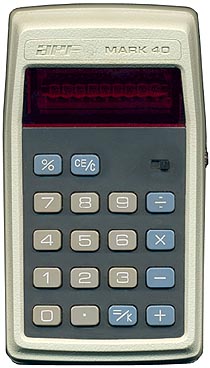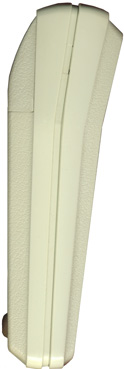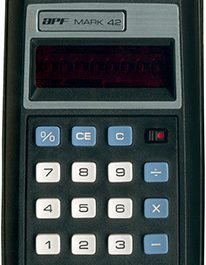
In the mid-1970s, electronic calculators were becoming smaller, more affordable, and gaining widespread popularity beyond scientific and business settings. The APF Mark 40 was one such model aimed at the growing consumer market. Manufactured in 1975 by APF Electronics in New York and made in Japan, this handy calculator measured just 65mm x 115mm and weighed only 92g including the battery.
Designed for portability, the Mark 40 fit nicely in the palm thanks to its compact wedge shape. The two-tone white plastic case featured APF’s branding molded into the surface. Inside, electronics were packed efficiently into two circuit boards connected by a ribbon cable. Keys were soft and squishy for comfortable use. Power came from a standard 9V battery lasting up to 40 hours with alkaline cells. An AC adapter could also be used.

The LCD display consisted of 8 large digits plus a 9th for negatives and error flags. The standard four functions – add, subtract, multiply, divide – were supported along with percentages. Automatic constants made repetitive calculations easy. Input overflow was suppressed, negative numbers displayed properly, and divide by zero errors were indicated and recoverable.

APF marketed the Mark 40 as “Think and Touch” – simple to operate with logical processes baked into the hardware. The manual provided numerous examples and a six month warranty. Subtle coloration and compact styling targeted female consumers looking for a basic portable calculator for school or home budgeting. While limited compared to today’s advanced hardware, the Mark 40 brought calculation power into the hands of the masses.
